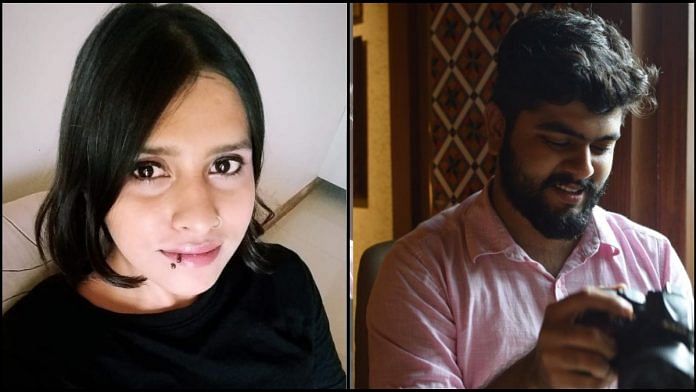New Delhi: Among the 13 bones, suspected to be Shraddha Walkar’s body parts, that were recovered during search operations conducted in Delhi’s Mehrauli jungle, is a bone from the pelvis region with cut marks on it. This is being seen as a crucial evidence to establish murder in the case, sources told ThePrint.
Walkar was allegedly murdered by her live-in partner Aftab Amin Poonawalla on 18 May, and her body was chopped into 35 pieces, which were then disposed of in the Mehrauli jungle.
The pelvic bone recovered is an attachment of the lower limbs, found with the sacrum which is a shield-shaped bony structure located at the base of the lumbar vertebrae.
According to sources, the bones recovered till now appeared to be only from the limbs, which is not sufficient to establish a human being’s death. This bone, however, establishes that these are mortal remains of a human. What, however, still remains a challenge is to establish if these were Walkar’s. It will only be known after a detailed forensic examination.
“In such cases we go for a skeletal reconstruction of the dead person, and in this case it would be Walkar’s. To establish death, we need to ascertain the recovered bones are from which region. If these are bones from a hand or a foot, it doesn’t establish murder. But if it is a skull bone, or bones from spine, pelvic area, it establishes death. In this case, now we know that the bones that we recovered, on the instance of the accused, are mortal remains of a dead person,” a source explained.
“It, however, still needs to be verified if these are Walkar’s bones, which will be clear once the results of the forensic examination are out,” the source added.
The recovered bones have been sent for a forensic analysis. Another test will also be conducted to match the DNA extracted from the bones with that of Walkar’s father. Once that matches, it will be certain these are Walkar’s mortal remains.
Also read: Secret NSE phone-tap or ‘financial fraud’? Inside story of ED case that’s snared ex-IPS officer
Cut marks on bones can establish nature of weapon used
According to police sources, marks on the recovered pelvic bone will help establish if Walkar’s body was cut using a heavy and sharp weapon like an axe, in one blow, or with the help of a saw that makes repetitive cuts in the same place, or any other blunt object.
During interrogation by the police, Poonawalla had claimed that he had cut the body using a saw.
“In cases like these, when bones are found they narrate a story. Looking at the bone and by studying the pattern on it, we can ascertain how and by which weapon it was cut. Whether a knife, an electric saw, a manual wooden saw, an axe or a blunt object. This technique is used in many cases to link weapons of crime with the mortal remains,” said Y.S. Bansal, chairman, forensics, PGI, Chandigarh.
A source in the Delhi Police also said a host of other articles have been recovered from Poonawalla and Walkar’s Delhi flat, including electronic devices as well as knives of different shapes and sizes, which have now been sent for forensic analysis.
“Unless Walkar’s DNA is found on any of those knives that have been recovered, it cannot be established if her body was cut using those. We have sent these for an analysis. Moreover, all electronic gadgets recovered from the house have also been sent for an analysis,” a police source said. “All the reports are still awaited,” the source added.
Also read: Video calls, diamonds, bags worth lakhs — ‘love affair’ of actor Jacqueline & ‘conman’ Sukesh



